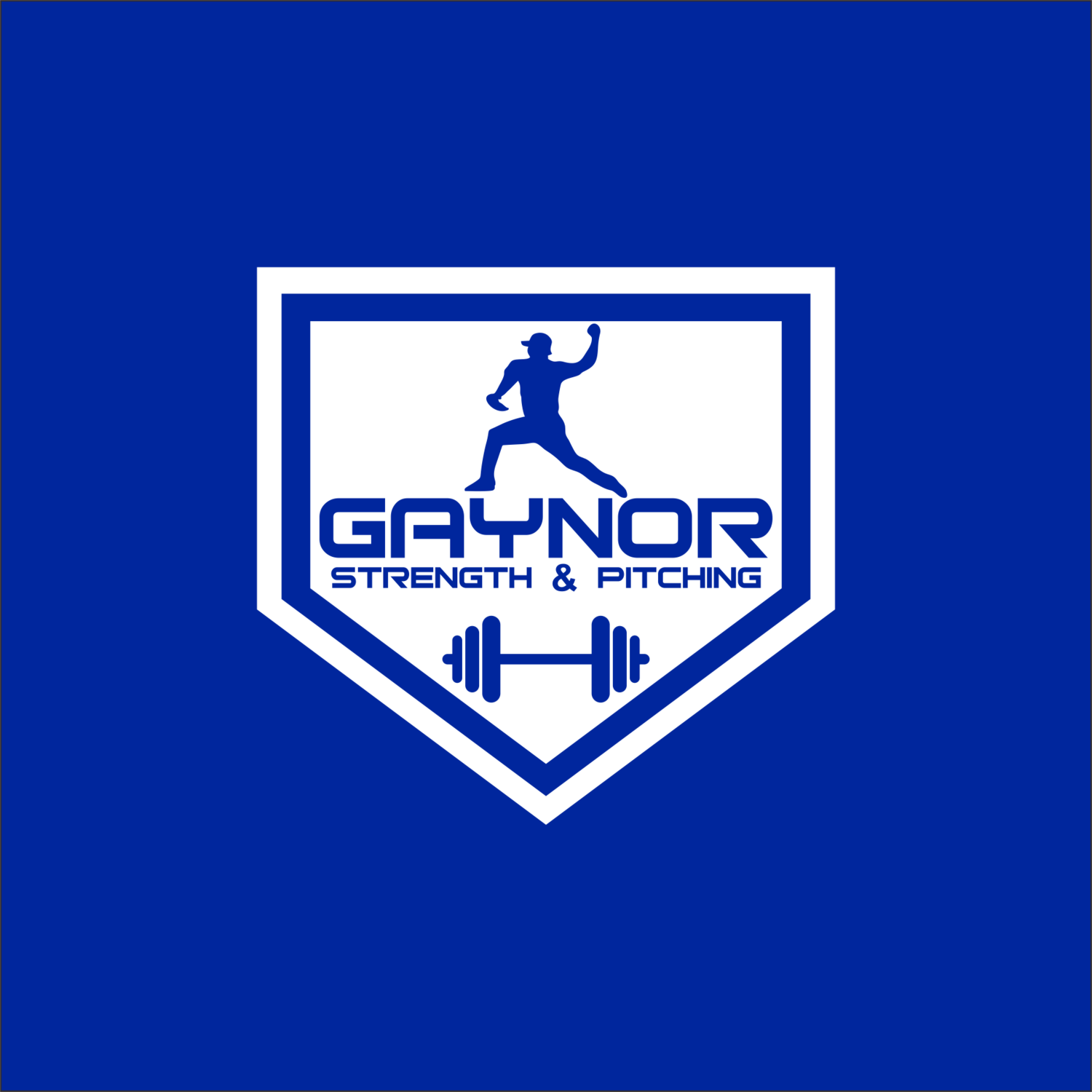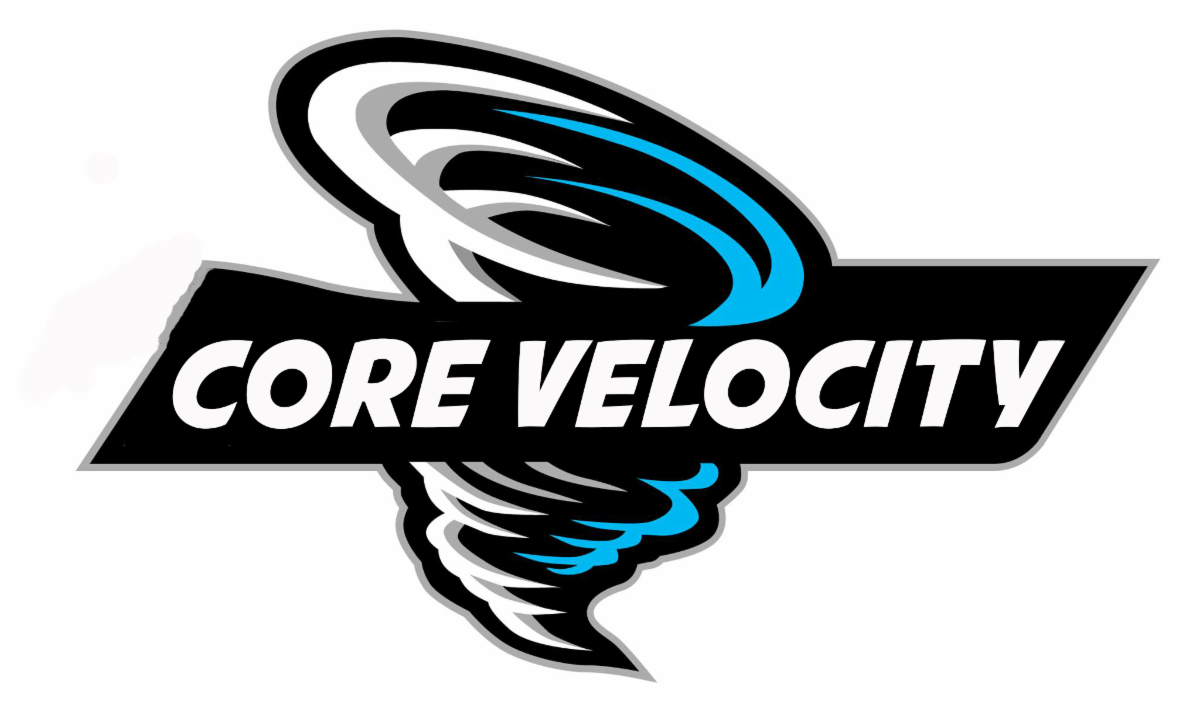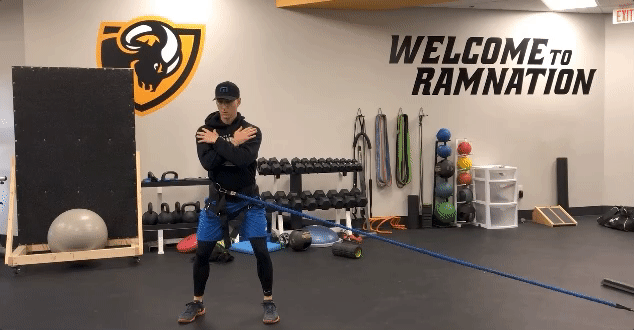In this post I am going to discuss the different ways I use Lantz Wheeler’s Core Velocity Belt to improve movement patterns. I first started using the product a couple years ago and absolutely loved the way I was able to FEEL my lower half move and separate from my upper half. I use the belt as a warm up tool, with plyo throws, baseball throws, and also with medicine ball drills! There are a lot of different ways you can use the belt and it allows for creativity to help the athletes you work with. In this article I am going to discuss in detail some of the ways I use the belt.
Warming Up with the CVB
There is no question that the hips and glutes are critical for hitters and throwers. The first exercise I have guys do with the belt are kneeling hip hinges with the band in the back and the front. I like starting off with this for a couple reasons. The first reason is I think it is great for instilling proper hip hinge patterns. Secondly, it is a good exercise to start warming up the hips and glutes. Like most things I program, I’ll have guys start off basic and gradually build up to higher intensity movements that closer replicate a throw.
After these exercises are complete I’ll move onto a kneeling glute load with rotation. The goal of this exercise is to start feeling the lower half separate from the lower half. Being able to do this movement is critical for high level throwers and hitters. You can perform this exercise in any direction you want with the band. I like to do about 5-10 reps of each position.
The next drill is a progression from the drill above. Instead of separating the upper half and lower half on the ground, we’ll now do it standing up.
When it comes to the warm up you can get creative on what you want to accomplish. The big things for me to work on with the belt as apart of your daily routine are separation and hinging at the hips properly. There are a lot of ways to accomplish this with the belt!
Throwing with the Belt
Throwing with the CVB is where it starts to get fun. You can set up the belt to resist or assist you. I like to use both depending on what I think the athlete needs at the time. If I feel he is struggling to get his hips through on time or maybe he isn’t even getting his hips through at all, I’ll set up the band pulling him towards his target with the attachment on the back hip as shown below.
If you feel he still might be struggling you can even set the anchor further to the thrower’s glove side to assist with rotation! This can be done on flat ground, on the mound, or even in plyo work in drills like the rocker and the step back drill. The key is to try different things and see how the athlete responds. What works for one might not work for another. Get creative and let the belt work its magic.
Another way I like to use the CVB is to assist with lead leg blocking. To do this I’ll have the anchor behind the thrower with the band attaching to the lead hip going behind him. As he goes to throw it is going to help the lead hip pull back at ball release. Check out the video below to see what I am talking about.
As you can see I am working on my front leg blocking in the rocker drill. It can be done with various throwing drills of your choosing.
Medicine Ball Work with CVB
Want to work on these movement patterns, but don’t want to load up the throwing volume? Doing medicine ball drills with the belt is a great alternative. You can do rotational exercises including shot-put throws, step back, figure eight, rocker, etc. If you want to work on lead leg blocking do split stance overhead throw variations with the belt. Try using the belt in different directions to see what FEELS the best. Different positions will work slightly differently so it is important to try them all to see which is helping you with what you want to accomplish.
Final Thoughts
There is no question that the CVB is a valuable tool that can help your athletes feel the correct movement patterns without consciously thinking about it. Like I said earlier, you can use the belt as apart of your warm up, catch play, plyo work, bullpens, and during medicine ball drills. Get creative with how you use it and see what works best for you and the players you work with.
A common thing I will do when I throw with it is I’ll do 5 throws with resistance, 5 with it assisting, and 5 without the belt. This has worked for me and some of the guys I’ve worked with. There are different ways you can implement it. What I would recommend is tracking how you are using it and see what method works best for that specific athlete over time.
As always, thank you for reading this and if you have any questions please email us at info@gaynorstrength-pitching.com
-Jared

















Have you ever noticed that you throw almost the same speed at 80-90% effort as you do at…